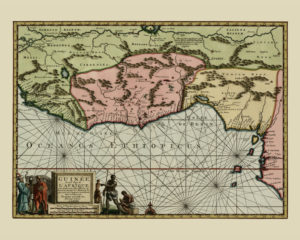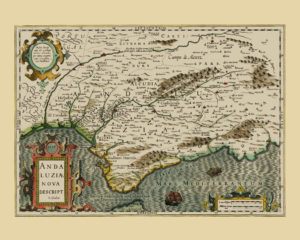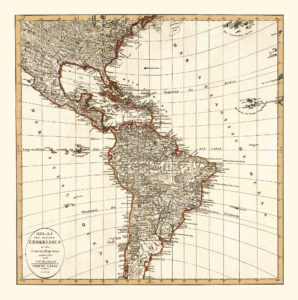Map of Australia and Oceania, ca 1876
British, Dutch, French, Spanish, Portuguese and American colonies are marked in the chart.
The second half of the 19th century was the pinnacle of the colonisation of Oceania. The process began in 1788 when Australia became a British colony. Smaller islands followed in the1840s: the French claimed the Society Islands, the Tuamotu Archipelago, the Gambier Islands and the Marquesas. Papeete, the largest settlement in Tahiti became the capital of French Polynesia. New Caledonia followed in the 1850s as a French penal colony. At first, the British were unwilling to claim larger areas of the Pacific due to the expensive administration of tiny, sporadically inhabited islands scattered across an enormous area. This changed with the opening of the Panama Canal in the 1880s, which opened up new nautical routes in the Pacific. The emergence of Germany and the USA as new colonial powers was another reason for the fast colonization of the Pacific islands in the late 18th century. The atmosphere of colonial Oceania is depicted in the memoirs of the famous British author Robert Louis Stevenson who travelled the Marquesas and the Gilbert Islands in the 1880s.









